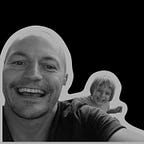Navigating the Levels of the Human Mind: Understanding Abstraction
We all start with similar cognitive abilities. All children share a similar capacity to learn a new language, regardless of our past.
What differentiate though is the level of abstraction each mind is capable to reach during a lifetime, in any particular domain. According to current understandings, the level of abstraction is highly dependent of some hidden patterns inside the DNA (genetics) but also some hidden patterns in the environment we grow up and develop (epigenetics) .
In simple terms, abstraction is the ability to recognise essential features as part of a class, while ignoring the non-essential ones. Later on, we identify some common features shared by some of these classes and we go a level up. We define a new class of classes. This process goes in infinit regress or progress. Each upper level makes the lower level a subclass of itself.
This fractal structure applies to any mind process, at smallest and largest scale.
When applied to the entirety of the processes of thoughts, 4 levels of mind can be identified:
- The first-order level includes observable behaviour and physical environment. Specific to childhood.
- The second-order level includes thoughts, feelings, and intentions about first-order level. It is specific for most of the adulthood.
- The third-order level, is the level of believes, values and assumptions. It includes introspection. The ability to reflect on one’s own thoughts, feelings, and assumptions. This is the level where most of the psycho-therapies operate now to modify the second-order level.
- The fourth-order level seems to be very close to the limits of the human mind. It is the area of intuition and empathy. Higher levels of abstraction need the help of computers and mathematical symbols. Psychedelics or altered states of consciousness journeys are also trying to map this area; although not being rooted in the first two level might be a challenge for new theories to emerge.
Changing or altering one’s third-order premisses is only possible from the fourth level.
Becoming aware of the patterning of sequences of one’s own behaviour and of that of the environment is only possible from the fourth level.
The bad news is that abstraction needs undivided attention. Attention which is highly scarce today and nothing points out that will be a change in trend soon.
The good news is that today we have accelerating technology to pick up hidden and subtle patterns, previously out of reach.
At Adiem we operate at the 4th level.
We search patterns transcending all layers. We also design and build science based solutions transcending all levels.
Please come in, the elevator is going up!
Below are some interesting books about the topic:
“The Pragmatics of Human Communication” by Paul Watzlawick, Janet Beavin Bavelas, and Don D. Jackson
“Collective Reflexology” by Vladimir Bekhterev
“The secrets of words” by Andrea Moro and Noam Chomsky
